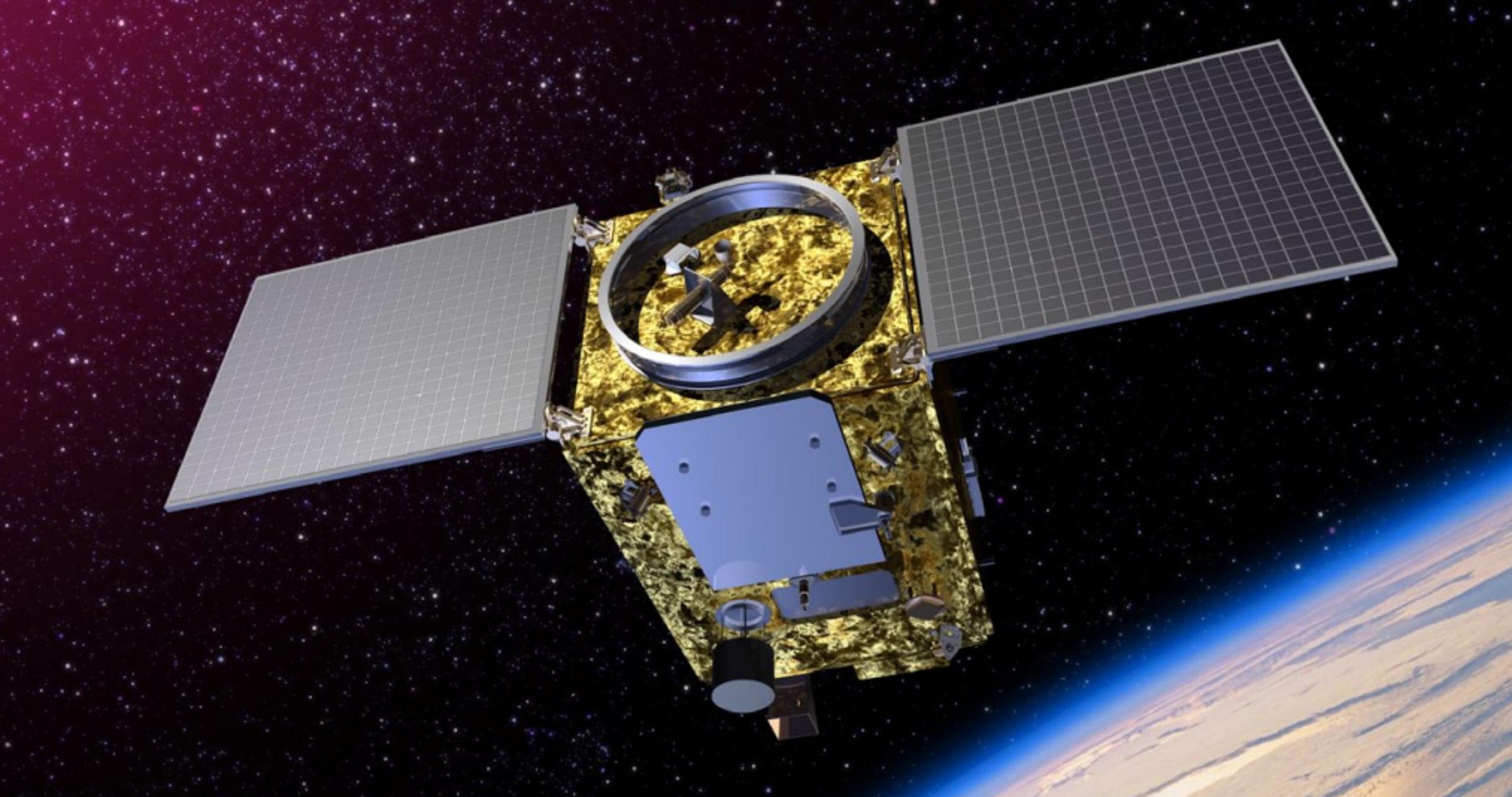
Regional Roundup: March 2016
Top satellite industry news from around the worldFebruary 16th, 2016
MHI Exec Hopes For Great International Presence Going Forward
Mitsubishi Heavy Industries (MHI) hopes the successful launch of Telesat’s Telstar 12 Vantage satellite on the H-2A rocket will be the precursor to more international business. Ko Ogasawara, vice president and general manager at MHI Launch Services, told Via Satellite that the company hopes to do more launches for international customers in the 2018 timeframe. MHI is booked pretty solid with Japanese government launches over the next two years.
“In 2016, we will have four to five launches, all government launches. In 2017, there will be another four to five government launches. We would love to have other deals with the ‘Big Four’ operators. We are now doing new launcher development for the H3 vehicle, which will be very competitive to SpaceX and Arianespace. The big operators are very interested in launching with the H3,” he said.
SpeedCast Begins Offering O3b Networks Services

SpeedCast has launched service with O3b Networks, delivering satellite connectivity to Christmas Island and Papua New Guinea (PNG). The companies are working with the Christmas Island Internet Administration (CIIA) — the only Internet Service Provider (ISP) on Christmas Island — and with local PNG ISP, Seeto Kui’s MyNet ISP, which will rollout a low latency, citywide Wi-Fi distribution in Lae, PNG, using the new service.
Since launching the O3b service on Christmas Island, SpeedCast reports a 300 percent increase in data usage.
SSL to Provide Next Satellite for Telkom Indonesia
PT Telkom Indonesia has selected Space Systems Loral (SSL) to provide the next communications satellite Telkom 4, which will be used for FSS in Indonesia, India, and Southeast Asia. The satellite will be based on the SSL 1300 platform, which provides the flexibility to support a broad range of applications and technology advances. It is designed to provide service for 15 years or more.
ISRO Orbits Fifth IRNSS Navigation Satellite


The Indian Space Research Organization (ISRO) launched the fifth of seven satellites in the Indian Regional Navigation Satellite System (IRNSS) aboard a Polar Satellite Launch Vehicle (PSLV). The satellite entered an elliptical orbit very close to its intended orbit, separated from the PSLV fourth stage and automatically deployed its solar panels. ISRO’s master control facility at Hassan, Karnataka has control of the satellite, and will conduct four orbit maneuvers to reach geosynchronous orbit at 111.75 degrees east longitude with 28.1 degrees inclination in the coming days.
ISRO launched the first four IRNSS satellites between 2013 and 2015. Following IRNSS 1E, the agency has two more navigation satellites launching this year to complete the constellation. Ground stations in 18 locations throughout India support IRNSS.
AsiaSat Granted Video Services Permit to Broadcast in China
The State Administration of Press, Publication, Radio, Film and Television of the People’s Republic of China (SAPPRFT) has recently given permission for AsiaSat to serve Chinese broadcasters for video distribution to cable headends in China via its AsiaSat 6 satellite. Shanghai Interactive Television (SiTV), a subsidiary of Shanghai Oriental Pearl Media, has signed a contract with CITICSat, which holds the exclusive right to market AsiaSat 6 capacity in China to broadcast 10 HD pay-TV channels.

Inmarsat Orders Two Sixth-Generation Satellites from Airbus Defence and Space

Inmarsat has awarded Airbus Defence and Space a contract to build the first two mobile communications satellites for Inmarsat’s sixth-generation fleet (I-6). The contract, valued in the region of $600 million for construction of the two satellites, will see Airbus deliver the first satellite, Inmarsat 6 F1 (I-6 F1), by 2020.
Inmarsat’s I-6 fleet will feature dual payloads that support L-band and Ka-band services. The operator is using an all-electric design to take advantage of the reduction in fuel mass to pack in a larger payload. Based on the Eurostar E3000e variant, I-6 F1 and F2 will carry a large 9-meter aperture L-band antenna and nine multibeam Ka-band antennas. A new generation modular digital processor will provide full routing flexibility over up to 8,000 channels and dynamic power allocation to more than 200 spot beams in L-band. Ka-band spot beams will be steerable over the full Earth disk, with flexible channel to beam allocation. The satellites will take four to six months to reach orbit, depending on the type of launcher used. Each satellite is designed to remain in service for more than 15 years.
Belarusian Telecom Satellite Launched Aboard Long March 3B Rocket

Belintersat 1, the first satellite of Belarus’ new national operator Belintersat, launched aboard a Long March 3B rocket from China’s Xichang Satellite Launch Center’s LC3 pad. The satellite’s orbital location is 51.5 degrees east, where it covers Europe, Africa and much of Asia to provide telecommunication services such as TV and radio broadcasting, and broadband Internet access.
Belintersat 1 is based on the DFH-4 satellite platform from China Great Wall Industry Corporation with Thales Alenia Space supplying payloads. The satellite carries 20 C-band transponders and 18 Ku-band transponders.

RSCC’s Express AMU1 Reaches Geostationary Orbit
The Russian Satellite Communications Company’s (RSCC) Express AMU1 satellite has been successfully placed into geostationary orbit. Express AMU1 is fitted with Ku- and Ka-band transponders and is intended to support the development of TV and radio broadcasting services, including Direct Broadcast Satellite (DBS) and broadband data, in the European part of the Russian Federation and in sub-Saharan Africa.
The Express-AMU1 satellite was manufactured by RSCC under the Federal Space Program of the Russian Federation for 2006 – 2015.
Neosat to Use Snecma’s Plasma Thruster for Electric Propulsion


Prime contractors Thales Alenia Space and Airbus Defence and Space have jointly selected, along with the European Space Agency (ESA), Snecma‘s PPS5000 plasma thruster for their new-generation telecommunications satellite platforms now being developed through the Neosat program. ESA also authorized Thales Alenia Space and Airbus Defence and Space to start final contractual negotiations with Snecma.
The Neosat program includes the delivery in the summer of 2017 of complete shipsets of plasma thrusters, along with design studies and testing, for the two prime contractors’ respective platforms: the Eurostar Neo from Airbus Defence and Space, and the Spacebus Neo from Thales Alenia Space.
LeoSat Names Former SES Exec as Chief Commercial Officer
LeoSat has appointed Ronald van der Breggen as Chief Commercial Officer (CCO), responsible for managing the global sales and marketing operations of the operator and its future constellation of up to 108 High Throughput Satellites (HTS) in Low Earth Orbit (LEO).
Van der Breggen has more than 20 years of experience in the telecom and satellite industries. From 2003 to 2013, he served as VP of customer account management at SES.

TCC CEO Evaluates Opportunities in LATAM Pay-TV Market
TCC, a leading pay-TV services provider in Uruguay, is evolving its approach to the market as trends in video continue to transform. The company, which started as a content distributor solely through cable, made the decision not to be tied to any specific method of distribution. Today, TCC offers content through cable, satellite, IPTV and OTT platforms, and has plans to expand geographically. Javier Ruete, CEO of TCC, told Via Satellite that the market for pay-TV in Latin America remains robust and that satellite is playing an important role.
“In the last five or 10 years the pay-TV market has grown mainly due to the fact that lower income households have been improving their income in the last decade,” he said. “That has expanded the market. In that context, DTH operations have been very keen on acquiring that new market against cable, which has usually been focused on urban areas and middle- to high-income households. In this new market, DTH operations have been the ones that have gotten much of that growth.”
Advantech Wireless Clinches Major Satcom Infrastructure Award in Brazil

Advantech Wireless has received an order for Ka-band hub facilities from Telebras, the Brazilian telecommunications infrastructure company, in support of the Programa Nacional de Banda Larga (PNBL), Brazil’s national broadband access initiative.

Under the contract, Advantech will provide the hardware to build Ka-band satellite network hub facilities at five sites in Brazil. The hub stations will work on Brazil’s Strategic Communications Geostationary Satellite (SGDC) system, slated for launch this year aboard an Ariane 5 rocket. SGDC is under development in Brazil with support from Thales Alenia Space. The new infrastructure will support Advantech Wireless’ ASAT 2 High Throughput Satellite (HTS) networking equipment as well as legacy VSAT equipment from other vendors.
Axesat Strikes Capacity Agreement with O3b Networks
Axesat, a telecommunications provider in Latin America, has signed a deal with O3b Networks for HTS capacity. The company intends to use the capacity to support ISPs with broadband capabilities and Mobile Network Operators (MNOs) with 3G and 4G LTE connectivity for their subscribers. The agreement will also provide services to the corporate, government and residential markets.
O3b will provide HTS capacity from its constellation of satellites in MEO, which provide data with a latency of less than 150 milliseconds.
Brazilian Geostationary Satellite Enters Integration and Testing Phase

Visiona Tecnologia Espacial, responsible for the integration of the Geostationary Satellite of Defense and Strategic Communications (SGDC) system in Brazil, announced the completion of a key program milestone.

Recently, the mating between the satellite platform and the communication module was successfully performed, marking the beginning of the integration and testing campaign. The mating was conducted at Thales Alenia Space facilities, satellite supplier of the SGDC System.
NewCom Spotlights Importance of Remote Education
Satellite support of remote education needs to continue even during trying economic conditions, according to Jaime Dickinson, president and COO of Newcom International. Describing education as the biggest challenge facing countries in Latin America today, Dickinson told Via Satellite that connectivity used to enable remote education needs to remain a priority.
NewCom is a satellite and terrestrial communications provider with extensive business in Latin America. Dickinson said the company’s business is approximately 80 percent Latin America, with the remaining 20 percent in Africa.

Satellite Brings Aircraft Surveillance to Africa
South African airlines are seeing growth on the horizon, but the continent still operates with relatively sparse air traffic surveillance. With the South African Air Navigation Service Provider (ANSP), Air Traffic and Navigation Services (ATNS), recently signing on with Aireon to enable space-based Automatic Dependent Surveillance-Broadcast (ADS-B) capabilities across the Johannesburg Flight Information Region (FIR) and the Cape Town FIR, the country could gain access to more complete air traffic surveillance capabilities by 2018.
“The implementation of space-based ADS-B will supplement the current terrestrial surveillance network in South Africa in those areas where there is either no coverage or where terrestrial systems are uneconomical to install. Furthermore space-based ADS-B will provide a backup surveillance service in the event of terrestrial surveillance system outages,” ATNS CEO Thabani Mthiyane told Via Satellite.
ABS Extends Teleport Agreement with Batelco

ABS has extended its agreement for teleport services with Batelco in Bahrain. Under the agreement, signed in 2011, Batelco provided ABS with a full suite of telecom services at its teleport.

Batelco’s teleport boasts a 30,000 square meter operational area with partners gaining access to the telecom’s Multiprotocol Label Switching (MPLS), Synchronous Digital Hierarchy (SDH) national, international networks and Internet uplinks. The facility also features seamless integration with terrestrial networks and provides full support for satellite and VSAT operators to streamline their operations efficiently.
Nigeria to Manage Belarus Satellite for 15 Years
China Great Wall Industries Corporation (CGWIC) has announced Nigerian Communications Satellite (NigComSat) as the winner of a bidding process to provide In-Orbit test (IOT) and carrier Spectrum Monitoring (CSM) services for Belintersat 1, a communications satellite owned by the government of Belarus.
Operations began earlier this year. The satellite has an expected lifetime of around 15 years.
MBRSC Completes Final Design of the KhalifaSat Engineering Model

Dubai’s Mohammed Bin Rashid Space Centre (MBRSC) has announced the final design completion of the KhalifaSat Engineering Model in addition to the software and systems within the satellite. This is the penultimate step prior to the manufacturing of the Flight Model of KhalifaSat, scheduled for launch in 2018 on Mitsubishi Heavy Industries’ (MHI) H2A launch vehicle. In addition to the Flight Model of KhalifaSat, Emirati engineers will commence the development of the ground station programs that will manage all post launch communication with the satellite.

KhalifaSat innovations include the development of automatic satellite control system through upgrading the primary satellite computer’s operating system and increasing its storage capacity.
SIS Live Leases New Capacity on Eutelsat 10A for Middle East Market
SIS Live has increased the amount of capacity it has from the Eutelsat 10A satellite, which offers connectivity in C and Ku-band, to increase its resources in the Middle East.
SIS Live is targeting customers from the major events and news sectors with demand for occasional use services. The company recently sold seven of its LoStow vehicle mounted antennas, designed and manufactured in-house, into the Middle East and North Africa (MENA) region.

University of Arizona to Launch Space Object Behavioral Sciences Initiative
Moriba Jah, a spacecraft navigator for the Mars Reconnaissance Orbiter, Odyssey and other NASA missions to Mars, is joining the University of Arizona’s College of Engineering and the Office for Research & Discovery to direct a new initiative to make the University of Arizona a world center of research and discovery on how objects behave in outer space.
The initiative is focused on space object behavioral sciences — the examination of objects in space, which includes locating satellites, studying the movement of objects in space and space traffic management. It will be part of the University’s Defense and Security Research Institute.
“What MIT was for the Apollo space program, I’d like the UA to be for space domain awareness,” Jah said.
Space object behavioral sciences addresses the causes for why and how objects behave in space. These inputs are not only due to the space environment, but also due to laws, policies, regulations and guidelines. This knowledge is critical to not only locating satellites and spacecraft debris, but also predicting their movement, preventing collisions and protecting space capabilities and services from loss, interruption and degradation.

Toyota Displays Research Vehicle with Kymeta Satcom Antenna
At the 2016 North American International Auto Show (NAIAS), Toyota is displaying a research vehicle based on the Mirai fuel cell vehicle, which is equipped with satellite communications technology from Kymeta, a U.S.-based company developing flat-panel antenna technology.
Toyota is working to enhance its connected technologies, including a plan to install a data communication module into a broader range of its vehicles. The company is also considering using satellite communications in the future, including high capacity satellites that offer much higher data transfer rates than conventional satellite technologies.
OneWeb to Open Office in DC Metro Area
OneWeb has signed a 6,000 square foot lease at 1400 Key Boulevard in Rosslyn, Va. for its new offices and is currently looking for engineers, managers, software architects, and a corporate paralegal to fill 10 open positions for this location.
The company is planning a constellation of 700 Low-Earth Orbit (LEO) satellites to enable affordable Internet access worldwide by 2019. OneWeb also recently announced the largest commercial rocket purchase in history along with a $500 million Series-A funding round including leading international companies such as the Airbus Group, Hughes Network Systems, The Coca-Cola Company, Virgin Group, and more.
Northrop Grumman to Provide Fiber-Optic IMU for Lockheed Martin Satellite Bus

Lockheed Martin has selected Northrop Grumman to supply its LN-200S fiber-optic Inertial Measurement Unit (IMU) for the LM 300 satellite bus. The LN-200S is a small, lightweight navigational element that senses acceleration and angular motion, providing data outputs used by vehicle control systems for attitude control and guidance.
The LN-200S has successfully performed on many spacecraft, including NASA’s Curiosity, Spirit and Opportunity Mars rovers, as well as satellites in geosynchronous and low Earth orbits.
FirstNet Releases Public Safety Broadband Network RFP
The United States First Responder Network Authority (FirstNet) has issued its Request for Proposals (RFP) for the deployment of its nationwide public safety broadband network intended to modernize communications for first responders and other public safety personnel across the United States. The release of the RFP follows more than a year of dialogue with government, public safety and industry on the objectives and scope of the RFP for the FirstNet network.
Proposals to the RFP are due April 29, with questions and capability statements due Feb. 12 and March 17, respectively.










